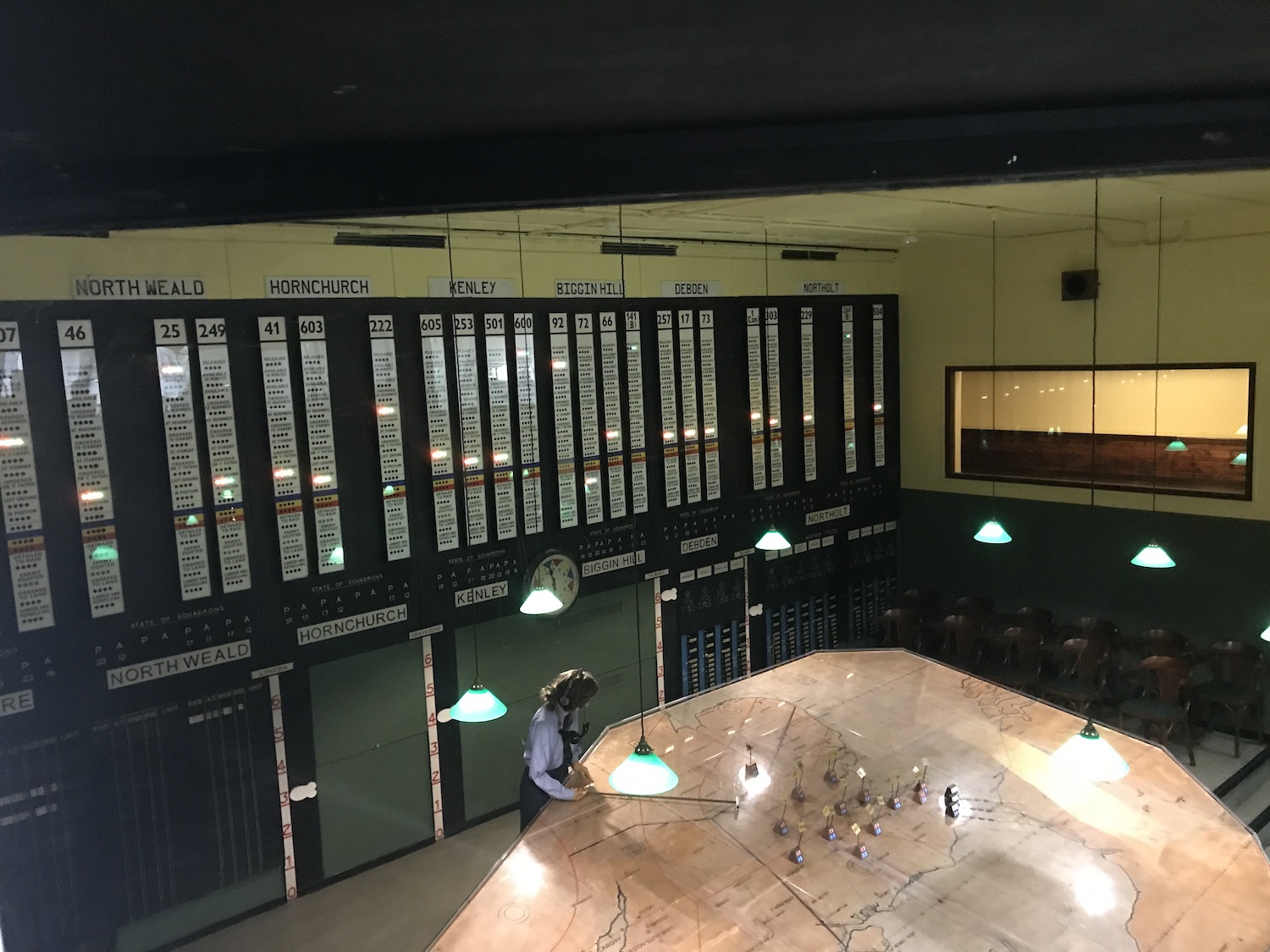
In a bomb-proof concrete bunker 60 feet below the ground of what was once RAF Uxbridge is one of the most important sites in 20th century British history. It is no exaggeration that without this Battle of Britain control room and the integrated air defence system of which it was a part, the course of WW2 might have followed a different track entirely, because had the Luftwaffe gained air superiority in the battle, there would have been an attempted invasion of the UK by the German armies based in France.
This was the operations room of 11 Group, charged with the air defences of London and the South East. Throughout the summer of 1940 when the Luftwaffe threw its resources against the RAF and then on London itself, it was here that the attacking bombers were tracked and the responses plotted, overseen from a gallery by Air Vice Marshall Keith Park, the New Zealand born commander of 11 Group, and Air Chief Marshall Hugh Dowding, the head of Fighter Command.
The air defence system that bore Dowding’s name was to prove decisive in the Battle of Britain. Using the new ‘Chain Home’ radar network and the men and women of the Royal Observer Corps, the size, speed, height and direction of the attacking forces was relayed to the control room. Using this information the RAF Spitfires and Hurricanes could be scrambled to meet the incoming bombers with a high degree of accuracy. Before WW2 an interception rate of 30-50% was considered excellent; in the Battle of Britain the rate was consistently 90% or more, meaning the hard-pressed fighter defences could operate at close to maximum efficiency. Illuminated boards (called ‘Tote Boards’ after the odds’ boards at racecourses) showed the status of the fighters (‘at standby’, ‘in position’, ‘enemy sighted’ etc) across the seven airfields within 11 Group command.
The Bunker is a ridiculously cheap place to visit – just £9 at present, and that includes an 60 minute presentation within the Ops Room itself by one of the excellent guides. Like going behind the glass in the Churchill War Rooms, there is a sense of being in the place where history was made. It is hugely atmospheric, and highly recommended. The website is here.
It was after watching the progress of the day’s combat in the bunker on 16 August 1940 (the day after what has become ‘Battle of Britain Day’) that Churchill turned to his military attache ‘Pug’ Ismay and said ‘Never in the field of human combat was so much owed by so many to so few’, a line he repeated in his speech to Parliament four days later, and which has gone on to be one of his most famous utterances.
The Bunker is open seven days per week. 10am to 4.30pm, with last admission at 3.30pm. You can book a ticket just for the (above ground) museum, or one that includes the tour of the Ops Room (this is what you want). Details and booking can be found here. The cafe does excellent cakes.
